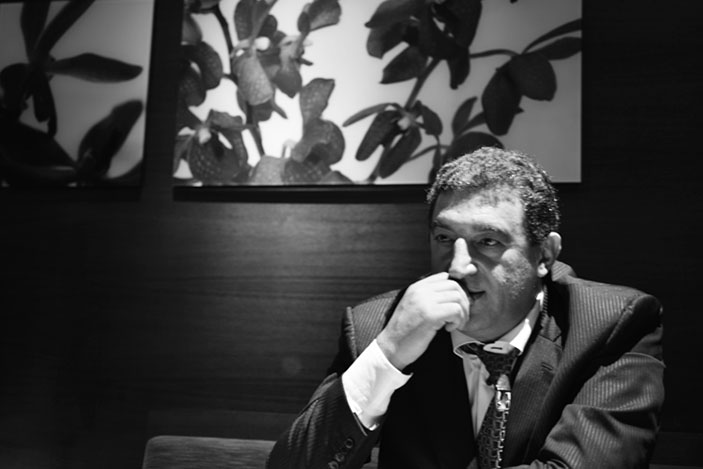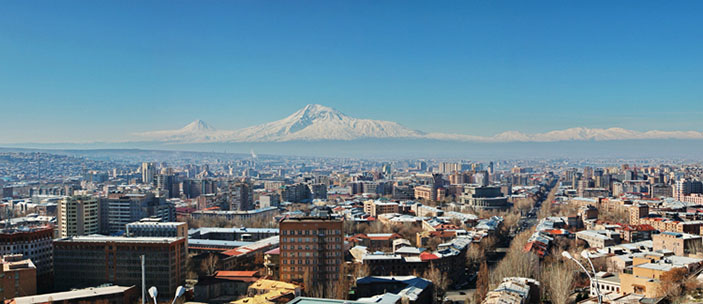A TROUBLED past, a difficult present, but a brighter future lies ahead for Armenia. This is the belief of its Vice Prime Minister, Vardan Ayvazyan.
Armenia is looking east for inspiration.
The landlocked country has one of the oldest civilizations around but has endured a tortured past of massacres, displacement and uncertainty that has left it in a state of unsteadiness as it strives to realise its potential.
A visit by the late Mr Lee Kuan Yew in 2009 opened up Armenia to the possibility of doing more business with Singapore.
Mr Ayvazyan is full of praise for Singapore’s rapid growth as an economy that he feels his country should emulate.

“We felt it was a positive influence how Indians, Chinese and other nationalities moved to Singapore and felt comfortable living there,” Mr Ayvazyan explains. While things may be a bit on edge on this front, the ease of assimilation and its reputation as Asia 101 is key to attracting foreigners to work and reside in the Republic.
“While many Singaporeans may not know much about Armenia, many Armenians know about Singapore,” Mr Ayvazyan adds, with a smile.
Built like one of those famed Armenian Olympic wrestlers, and with a hearty chuckle that cuts through once the ice is broken, the veterinarian student turned politician speaks about the transformation of his country as it moves away from an agricultural focus towards areas of technology, tourism and mining.
Mining Opportunities
Its mining interests have been the recent subject of a reverse takeover by Singapore concern Asia-Pacific Strategic Investments Ltd, which has access to a mining exploration licence in respect of a 140ha area that has deposits of gold, silver, antimony and copper.
By his own admission, Mr Ayvazyan admits his country could do more business with Asia.
“We export cognac to China. But we import from China, technology, household goods and furniture. And from Indonesia we import sugar and coffee.
“Singapore is a new platform for us to build up the country. We will use the concept of protecting our investments and allowing enterprises to set up easily by improving the competencies of our administration.
“Besides sharing of ideas, we also want Singapore to participate, directly or indirectly: How to organise things, and by share with us its technological know how and experience. Armenia is ready to open sectors that were not open to the public, like mining.”

Encouraging Foreign Investment
We will simplify immigration laws to encourage foreign investors to own property. We also want to develop our tourism industry. “Armenia is an ancient country with ruins dating to 2000BC. It was the first Christian country and it has old castles and scenic mountains.”
You might also want to read:
Dick Lee On The Confusing 1970s
Riding The Cryptocurrency Current
The mining industry affords more jobs due to its labour intensive nature, and is also a longterm investment that is beneficial for the country’s steady future growth. Beyond extraction, the industry also has plans to offer value-added services such as smelting and processing. “We have a nuclear power plant and 120 hydro-electric stations. That means we can offer these services without too much extra cost.”
Mr Ayvazyan is hopeful that the Armenian diaspora that has spread internationally as a result of previous conflicts, but which continues to support the homeland, will prevail in its ongoing investment in the country.
He is of the firm opinion that education will be the bedrock of Armenia’s growth. “We are spending US$450 million to develop international university degree programmes.”
He hopes to see Armenia evolve into a “happy” country that is able to shed the yoke of hardship that it now endures. “We have to create more jobs, lower taxes and improve the quality of life. We must encourage families to have more children. By creating financial wealth we can achieve this.”
This article was originally published in STORM in 2014.
Main Image: Hovhannes Boranyan / Shutterstock.com



















